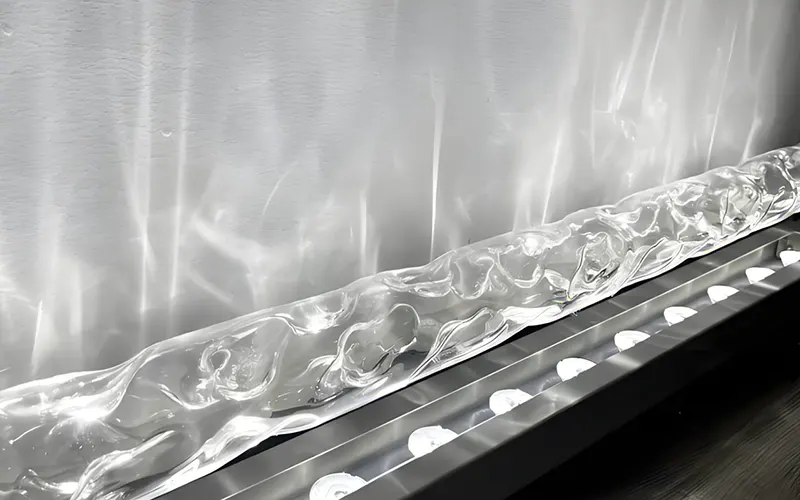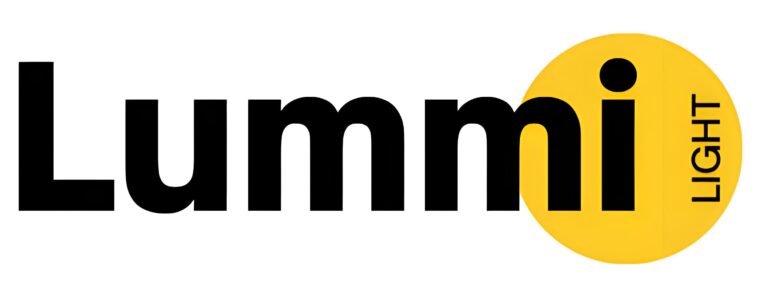RGBW vs single color LED water pattern lights Currently, water pattern lights on the market are divided into two main types, RGBW vs single color LED water pattern lights: RGBW water pattern lights and monochrome water pattern lights. RGBW water pattern lights integrate four LED chips: red, green, blue, and white, enabling rich color variations and unlimited lighting creativity. Single color water pattern lights, on the other hand, focus on the pure expression of a single color, and are therefore the preferred choice for many customers due to their simplicity.
Table of Contents
RGBW vs Single Color LED Water Pattern Lights, What is the Difference?
RGBW LED water pattern lights: Utilizing red, green, blue, and white LEDs, these lights can achieve multiple color switching and mixing effects via remote controls or DMX controllers. They’re a great choice if your project requires vibrant color changes and visual impact.
Monochrome LED water pattern lights: Use only one color (commonly seen in warm white, blue, green, etc.), with concentrated brightness and stable color. Suitable for functional lighting or occasions where frequent lighting effects switching is not required.
What are the Advantages and Disadvantages of RGBW LED Water Pattern Lights?

The greatest advantage of RGBW water ripple lights lies in their color reproduction. Users can adjust the color and effects of the light at any time to suit different occasions, moods, or design requirements.
From a functional perspective, RGBW water ripple lights typically offer a wider range of preset modes and customization options. Many products support music synchronization, automatically adjusting the color and ripple speed according to the beat and frequency of the music.
RGBW water ripple lights also have some significant disadvantages. The main one is their higher cost. Due to the need to integrate multiple color LED chips and complex control circuitry, their price is typically 2-3 times that of single-color water ripple lights.
What are the Advantages and Disadvantages of Single Color LED Water Pattern Lights?
The core advantage of single-color water-ripple lights lies in their simplicity and professionalism. Because they focus on rendering a single color, manufacturers can achieve greater precision and expertise in optical design and LED chip selection, typically resulting in higher brightness output and more authentic color rendering.
Single-color water-ripple lights offer a distinct price advantage. Their lower manufacturing costs make them an ideal choice for budget-conscious users while also lowering the barrier to entry for large-scale commercial applications. Their relatively simple circuit design means fewer points of failure, a longer lifespan, and lower maintenance costs.
Single-color water-ripple lights also have significant limitations. The most significant is their single color rendering. Once installed, users are locked into a single color, unable to adjust to their needs. This fixed nature can be inflexible in certain scenarios that require a diverse atmosphere.
How to Choose a LED Water Pattern Lights for Your Application?
When choosing between RGBW and single-color LED water pattern lights, you need to consider your specific needs and the characteristics of the application:
RGBW LED Water Pattern Lights:
- Hotel/resort pool lighting design
- Commercial plazas, nightscape light shows
- Festival decorations, party ambiance creation
- Smart landscape projects requiring multiple color changes
Single Color LED Water Pattern Lights:
- Private courtyards and small gardens
- Functional lighting (such as path lighting, rockery projections)
- Landscape lighting projects with limited budgets
- Requirements for long-term operation and fixed brightness
If you seek diverse lighting effects and a high-end feel, RGBW is undoubtedly superior. However, if you prefer a stable, durable, and cost-effective solution, single color models are still the preferred choice.
Conclusion
RGBW vs single color LED water pattern lights each have their own unique advantages and applications. There’s no absolute superiority or inferiority; the key is finding the product that best suits your needs. RGBW water-strip lights, with their rich color expression and intelligent features, are an ideal choice for those seeking a diverse and personalized lighting experience. Monochrome water-strip lights, with their simplicity, affordability, and reliability, are a good option for those on a budget. Understanding the appeal of RGBW and monochrome water-strip lights will help you make a better choice.
